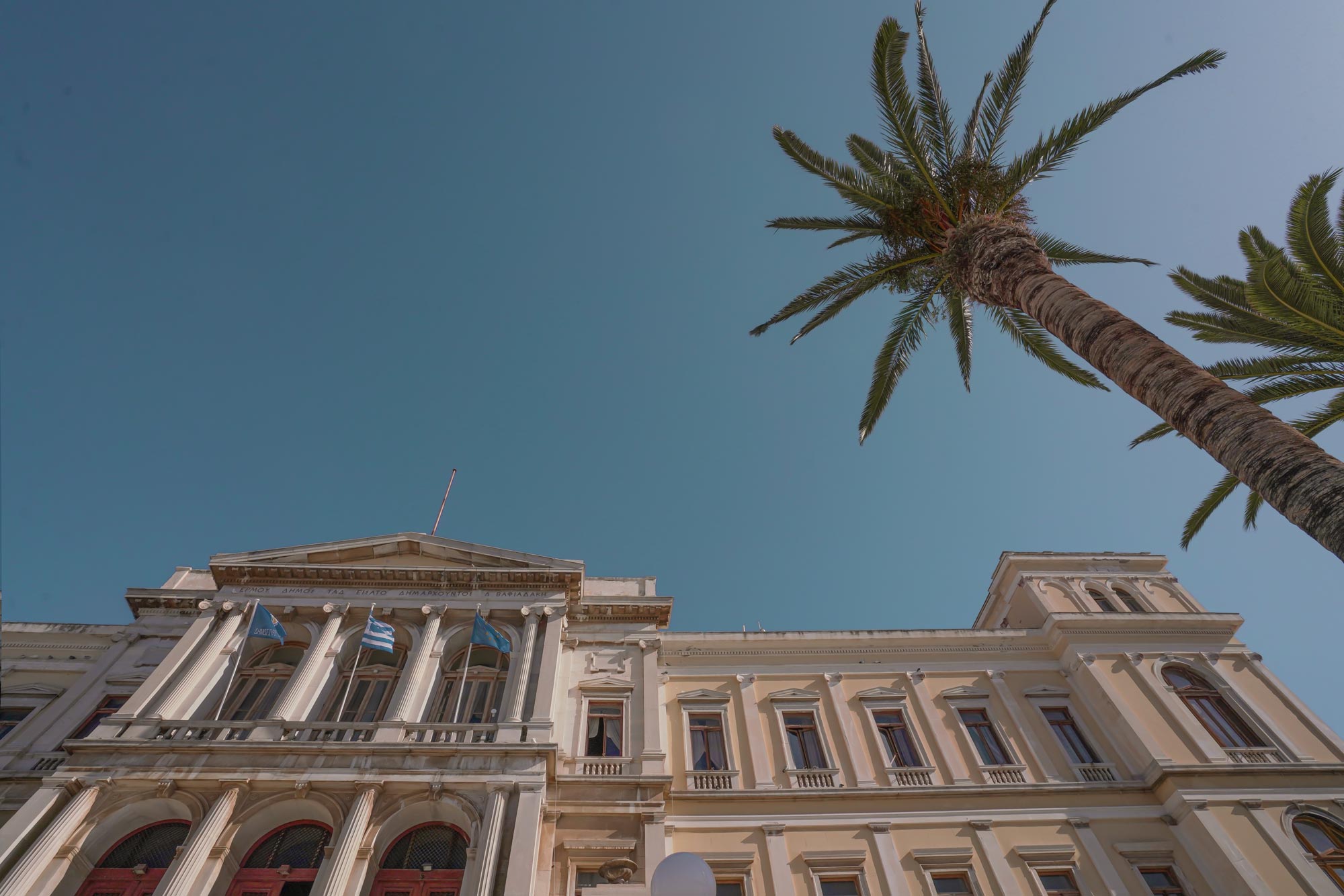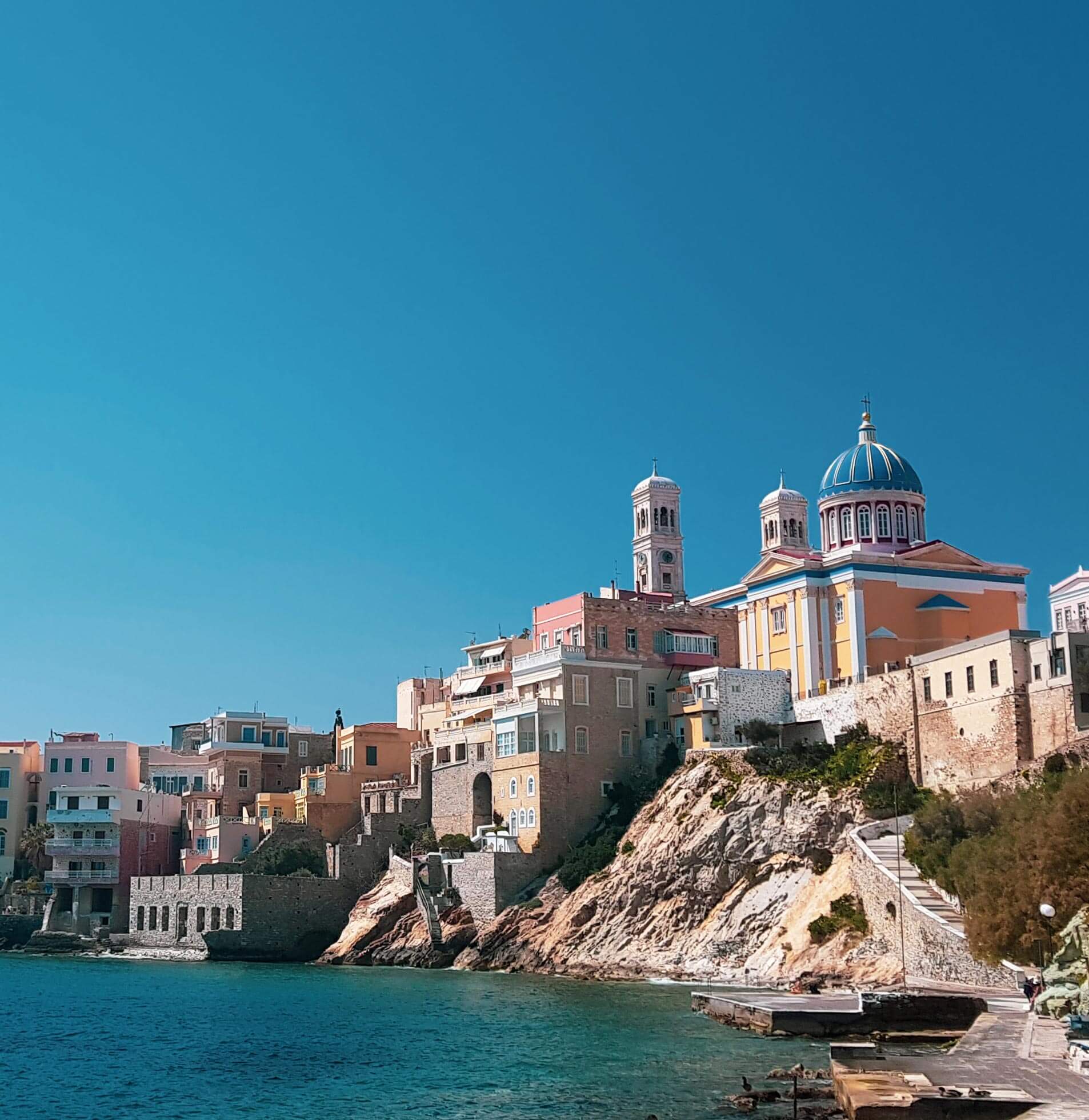An open-air museum of architecture par excellence, Hermoupolis is a lordy town whose style incorporates elements from Greek antiquity with Byzantine and northern European architecture. Αll within the context of Neoclassicism and with a healthy dose of Romanticism. The aristocratic quarter of this town is Vaporia, once home to the most prosperous group of Syros. Known for the mansions built at the edge of cliffs as if hanging above the sea - resembling ships that are about to sail, thus the name “Vaporia” which means Ships in Greek - the district is one of the most affluent and a treasure trove of iconic landmarks.
Hotel Argini is located in this historic neighborhood, just a skip down the street to the cathedral of Saint Nicholas, one of the emblematic sights of Hermoupolis, and the popular Asteria beach, allowing guests to discover beauties and attractions smoothly, all accessible on foot. A breezy 3-minute walk away from the Argini stand must-see attractions like the Apollon Theatre, the cultural icon built in 1864 by the Italian architect Pietro Sampo, and the 19th-century Miaoulis Square; the heart of Syros and where soars the imposing Town Hall of Hermoupolis, a neoclassical masterpiece of palatial proportions designed by the celebrated Bavarian architect Ernst Ziller.



As capital of the island and of the Cyclades complex, Hermoupolis is a conservatory of neoclassical beauties. A walk through vibrant streets and squares, princely mansions and imposing public buildings dating back to the late 19th century with amazing sea views reveals the history of this town that was founded by Greek refugees during the revolutionary war against the Ottoman rule in 1822. At the time, Syros was a safe shelter for the Greeks and, as such, accepted hundreds of refugees. Among them merchants, shipowners and entrepreneurs. The newcomers created Hermoupolis, fittingly naming it after the ancient god Hermes, and rapidly developed it into an important international commercial, cultural and industrial hub linking West and East. This heritage is today home to landmarks like the Town Hall of Hermoupolis, the Apollon Theatre, the cathedral of Saint Nicholas, the Custom Office and the Transit Warehouse next to it, beautiful marble mansions like those of the Historical Archive, the Municipal Library and the Culture Center. The cobble streets of this lively town carry the flair of another era offering art galleries and museums, like the Archaeological Museum and the Industrial Museum, but also boutiques, restaurants, concept shops, quaint tavernas, bars and cafés.
The neighboring hill is where Ano Syros, a Cycladic citadel of the late Byzantine era, is located. Boasting the effect of the famous Cycladic scenery, the medieval settlement is a labyrinth of small houses built close together, narrow cobbled streets and covered passageways draped in canopies of bright bougainvillea that lead to the top where the panoramic view is amazing.
Οn the southern part of Syros, atmospheric villages with imposing 19-century mansions and lush gardens - like Episkopio, Chroussa and Posidonia - alternate with seaside resorts with organized beaches, modern restaurants, cafés, bars and traditional tavernas. From vibrant and lively to secluded and serene, there's a beach for every taste. Agathopes and Galissas are cosmopolitan hangouts. Komito, Ambela, Achladi, Delfini, Lotos and Kokkina beckon the aficionados of the “living on island time” concept. Megas Gialos, Vari and Azolimnos are mostly considered family-friendly. Finikas has a long beach, a small marina for sailboats and yachts and family-run tavernas. Kini boasts beautiful sunsets, seaside cafés, restaurants and tavernas and a dock where small boats sail for a whistle stop tour of the northern unspoiled beaches of Aetos, Lia, Marmari, Gria Spilia and Grammata.
For another change of scenery, drive up north. Wind through the Cycladic rugged terrain to the prehistoric sites of Chalandriani and Kastri. Both of the 3rd millennium BC, they are considered as the oldest and most important fortifying constructions in the Aegean. The extent of the settlements, the variety in the plan views of the excavated houses, the findings of pottery, stone carving, miniature art and metalwork point to a thriving society that dates back to the late Neolithic era, between 4000 and 3000 BC.
An intriguing mix of the rugged landscape of the Cyclades and the finesse of Neoclassical architecture, stately and traditional, minimalist and maximalist, Syros is an island of grand contrasts. A short distance from Athens, the capital of Greece, and celebrated islands like Mykonos, Syros is connected with daily ferry routes and frequent flights to Athens and the islands of the Aegean, all year round.